Review: Sony Xperia Z3 for T-Mobile
Nov 24, 2014, 7:00 AM by Eric M. Zeman
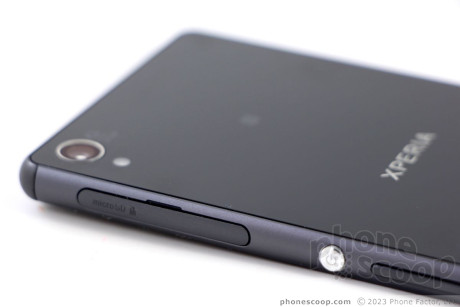
Sony's Xperia Z3 is an excellent addition to T-Mobile's lineup. Anyone invested in Sony's gaming and content services would do well to consider it. Even if you're not a Sony fiend, the Z3 is a tempting, premium Android handset.
Form
Is It Your Type?
The Xperia Z3 is best approached from a Sony-centric way of thinking. First and foremost, it is one of the finest phones ever made by Sony. The Z3 is a powerful device in its own right, but it is also just a cog in the larger Sony ecosystem. If you like premium stuff and you're a hardcore gamer who can't get enough PlayStation action, the Z3 should be your first stop.
Body
T-Mobile is selling the Sony Xperia Z3 in its pure form. Sony debuted the device earlier this year, and it was immediately commended for its design aesthetic, excellent materials, and top-class construction. It's nice to see a U.S carrier support Sony's best effort in the handset space.
As I noted in my review of the Z3v, the Z3 represents several years' worth of design evolution from Sony, including the Z1, Z1s, and Z2. Each relied on what Sony calls its Omnibalance design language, which means glass panels on front and back, a distinct, round screen lock button on the side, and a minimalist look. Most previous Z-series phones had rather sharp sides and angles that made them somewhat uncomfortable to hold. But with the Z3, Sony finally listened to consumers and rounded off all the edges.
The aluminum frame looks and feels good. The device is also slimmer and shorter than its predecessors, with less bezel surrounding the screen. It's about the same size as the HTC One (M8), but its corners are more square. It's still a large phone, but it's the most usable of Sony's Z series. People who have large hands should be able to use it one-handed if they stretch, but people with average or smaller hands will need both to use the Z3 effectively. It should fit into most pockets without issue.
The quality of materials and construction is excellent. I really like the combination of glass panels and metal. Everything fits together nicely. It's like carrying a tuxedo in your pocket.
The front is entirely absent of buttons or controls. Only the Sony logo is visible when the screen is off. The device uses on-screen controls to manage the Android operating system.
Most of the Z3's ports and slots are hidden from view thanks to hatches. Sony prefers using hatches to trays. The USB port is accessible behind a hatch on the left side of the phone. The hatch is small, but easy to interact with. There's also a set of metallic contacts on the left edge, which are meant for a dock. The hatch that protects the SIM card and memory card slots is much bigger, but no less easy to use. The stereo headphone jack on top doesn't need a hatch.
The Z3 is waterproof, but only if the hatches are sealed up tight. I tested this, and found it to live up to Sony's claims. You shouldn't worry about dropping it in the tub or sweating on it during an intense workout.
The volume toggle, screen lock button, and camera button are all placed on the right edge of the phone. Sony has long used an over-sized, round button for the screen lock. It's chrome and has a great profile; it's incredibly easy to find and use. However, I wish the feedback was a bit better. The volume toggle is below it. It's a thin dash that's too short. Travel and feedback are pretty bad; it's very mushy. The two-stage camera button works perfectly. Both stages are clearly defined, making it a nice option to use when taking photos.
The glass panel that forms the rear surface cannot be pried from the frame, which means you're not swapping batteries. Moreover, the Z3 doesn't support wireless charging like the Z3v.
Aside from a couple of mushy buttons, the Xperia Z3 is a great piece of hardware.
Performance
Screen
The Z3's screen matches the size (5.2 inches) and resolution (full HD) of its competitors. It's one of the better screens to adorn a Sony handset. It's bright, sharp, and colorful. It holds its own against phones from Samsung and LG. I was able to use it indoors and outdoors without trouble. Viewing angles are my only complaint; there's no color shift, but brightness drops off sharply when you tilt the phone.
Like many of Sony's smartphones, the Z3 lets you tweak the screen's behavior a bit. For example, the X-Reality engine is on by default. Sony claims this makes things "clear and vibrant." You can turn it off. You can also select Super-Vivid Mode, which makes colors stand out even more. The screen has a glove mode for use with gloves, and lets you adjust the white balance. I found the glove mode worked only about 50% of the time.
Signal
In general, the Z3 did well on T-Mobile's network in the metro NYC area. It always remained connected, even in weak coverage areas. However, calls took a lot longer to connect under weak coverage conditions, and data was noticeably slower. The phone didn't drop any calls while I tested it, but at least one went straight to voicemail. Data speeds were best under strong network conditions. I've seen better performance from other handsets on T-Mobile's network, but the Z3 was average if not slightly better.
Sound
Call quality was a bit uneven. The volume is great, there's no question about that. I was able to hear conversations pretty much everywhere I took the Z3, even in loud spaces. I experienced a fair amount of crackling and interference, however, that sometimes made me miss words coming through the earpiece. People I spoke to said I sounded a little choppy from time to time. The speakerphone delivered similar behavior. The volume is fantastic; I was able to use the speakerphone in a bustling lunch spot with no problem. However, voices were a bit robotic and scratchy. If you set the volume all the way up, ringers and alerts will grab your attention every time. The vibrate alert rates about average.
Battery
The Z3 has a 3,100 power cell on board. Sony claims it's good for up to 16 hours of talk time and more than a month of standby. The reality is somewhat less. The phone consistently delivered a solid day of uptime, with plenty of power to spare at bedtime. Like most phones, your mileage will vary a bit, but unless you're streaming YouTube videos all day, you should be fine.
Like other Sony smartphones, the Z3 offers several tools to help manage battery life, too. For example, it includes Sony's Stamina Mode, which turns off the data radio whenever the screen is off. There's also a Low Battery mode that automatically turns off a customizable set of features (such as brightness, vibrate, Wi-Fi, GPS, Bluetooth, sync, mobile data) when the battery drops below 30%. The controls don't necessarily offset the lack of removable battery, but can help extend battery life to the end of the day if you run into trouble.
Basics
Editor's Note: The Z3 runs an identical OS and UI to the Z3v, so we've duplicated some portions of the text below. We have, however, fully tested this version of the Z3 and its performance.
Menus
The Sony Xperia Z3 ships with Android 4.4 KitKat and Sony's user interface customizations. If you've used any Xperia- or PlayStation-branded device in the last year, you'll feel right at home.
There's only one shortcut on the lockscreen and it's for the camera. The camera will open from the lock screen whether or not you have a passcode. The lock screen itself can't be customized at all, but you can access the Quick Settings panel and view notifications.
There are five home screen panels available for customization. I like that the main app menu lets you view apps alphabetically, by most recently used, by the order in which they were downloaded, as well as user-arranged order. The Z3 carries over the Sony-made tool that lets owners manage the app menu (a control tray that slides out from the left side of the screen.) It's also fairly easy to hide or uninstall apps from the main app menu.
The settings tools function just as on other Android devices, as does the notification tray, though Sony has given them its own look and feel. Sony substituted the white-on-black design of the settings menu with a black-on white background and its own style of buttons and controls. Similarly, the notification tray lets you easily toggle between alerts and quick controls with an easy-to-decipher tool at the top of the screen. T-Mobile has added an account management tool to the notification tray that instantly shows you how many minutes and messages you've used, and how much data you've consumed.
The Z3 also carries over Sony's Xperia Small Apps. When you press the multitasking button, a little strip of apps appears along the bottom of the screen. The Xperia Small Apps include a calculator, note app, clock app, and voice memo app. These aren't shortcuts to full-fledged apps; they are miniature apps that pop up as a small window and remain open on top of any other apps you're using until you close them. The Small Apps can only be launched from the multitasking screen. They can be useful, but I wish you could adjust the transparency of these tools like you can with LG's similar QSlide feature.
The Z3 has a quad-core 2.5 GHz Qualcomm Snapdragon 801 processor. It's an incredibly powerful processor and it makes mince meat of any task you might assign to it. It chewed through every app, multitasked with ease, and sped through app installs. It's a great processor and Sony's hardware takes full advantage of it.
Calls and Contacts
Sony's phone and contact applications haven't changed much this year. The basic screen includes a dialpad and tabs across the top for access to your contacts and call history. The phone app has the expected features such as mute, hold, speakerphone, and add a line. It's simple to use. The contacts app syncs flawlessly with your Google, Exchange, and Facebook contact databases. There are only a couple of widgets and shortcuts for adding contacts to the home screen. Really, the phone and contact apps are one and the same. The only difference is which tab you see when open the app.
T-Mobile includes WiFi calling on most handsets. It requires you to jump through a few hoops to turn it on, but once you do it works really well. You can connect calls via your home (or other open) WiFI network and transition to the cellular network when you step outside. Once WiFi calling is turned on, the Z3 defaults to making calls over WiFi. WiFi calls sound better than cellular calls, hands down.
Messaging
The Z3 has the standard set of Android communications tools, including Gmail, email, Messaging, and Hangouts. These apps function just as they do on other devices. The Hangouts app ties into Google+ for video chats, IM, and SMS/MMS if you're brave. Google has yet to figure out how to seamlessly mix SMS and IM in the same app.
The messaging app — which behaves like the standard Android tool but has been skinned by Sony — is the default SMS app. You can switch to Google's Hangouts if you want, or choose something else from the Play Store.
The Z3 has no social networks pre-installed other than Google+, so you'll have to find them yourself.
Extras
Media
Like many of Sony's handsets, the Xperia Z3 is a media powerhouse. As you can guess, the Google Play Store and its selection of books, magazines, music, and movies is on board. These are the same apps found on most Android devices. They have been updated lately by Google and they work well. The new features and new design are enough to make them worth checking out if you haven't seen them in a while. The phone has an FM radio, too.
Sony uses its own Walkman and video player apps for sideloaded content. The Sony Walkman app is a feature-rich music player and surpasses the Google Play Music app in terms of usability and features. I like the way it arranges playlists and albums, and it has a nice visual look and feel. It has a great equalizer for customizing the sound. The video player is similarly good.
The Xperia Z3 also includes Sony Videos Unlimited. The Videos Unlimited service offers movie rentals. Pricing for the rentals varies by title. It's run by the Sony Entertainment Network. You need to use your existing PlayStation account in order to use it.
T-Mobile added the T-Mobile TV app. T-Mobile TV is a for-pay streaming service that offers snippets of TV shows and movies. It works best when you have a strong LTE signal available. It costs money, though, and there are better content services available.
The Z3 has a handful of compelling sound optimization tools. For example, there's ClearAudio+. You can turn it on or turn it off. I have no idea what it does, but if you turn it on, it negates any other sound effects you may have customized. The dynamic normalizer balances out volume peaks and valleys in music and videos. The Z3 also supports high-resolution audio, but you need to use USB and connect to a freaking digital-to-audio headphone amplifier. I hardly know anyone — even audiophiles — who uses a DAC headphone amplifier. You can actually tell the Z3 what type of Sony headphones you have (assuming you have Sony headphones.) This ostensibly customizes the sound further to compensate for whichever pair of Sony headphones you happen to be using.
Last, the Z3 has its own stereo speakers, which makes watching video more enjoyable when you don't have a pair of good headphones laying about. I thought the stereo sound was quite good, and there's a tool to tweak how the stereo speakers handle surround sound audio.
Camera
The Z3's camera app is more or less carried over from the Z1s and Z2. It's a solid piece of software that I find works well. One of its best features? You can wake it with a long press of the dedicated camera button. This is by far the fastest way to launch the camera, and it takes under 2 seconds. You can set the feature to launch and fire a shot, or launch and start recording video, if you wish. Cool.
On the screen, the main buttons (camera, video camera, modes) are all on the right, while buttons for the flash, user-facing camera and settings are all on the left.
The default shooting mode is called Superior Auto. It's good at detecting various types of scenes and then adjusting the settings to match what you're looking at. Basically what this means is that it can switch between macro photography (shooting close-ups), HDR photography, and regular photography automatically. It's also good at noticing low-light situations and adjusting the flash accordingly. I found Superior Auto worked incredibly well on the Z3. It's much faster than the Z1s/Z2, probably due in part to the Snapdragon 801 processor. For most people, this is the shooting mode to use.
There are 15 other shooting modes, and I find them to be overwhelming. It's just way too much to digest, even if they are fun to use and create interesting results.
Those extra modes include: Manual; Sound Photo (takes photos with background sounds); AR Fun (use virtual objects to enhance photos); Multi Camera (use both cameras at the same time); Face In (use both cameras to put your face in either photos or videos); 4K Video (obvious); Timeshift Video (high frame rate for slow-motion results); Live On YouTube (broadcast live video to YouTube); Background Defocus (blurs the background); AR Effect (take photos with virtual scenes and characters); Creative Effect (select effects - i.e., filters - for artistic photos and videos); Info-Eye (augmented reality search tool); Timeshift Burst (takes a quick burst before you press the shutter button to increase likelihood of getting good shot); Social Live (publishes directly to Facebook); and Panorama. Sound like a bit much?
Each of these individual modes works fairly well. I didn't have much luck with the Info-Eye feature, perhaps because I live in the sticks of NJ and there's nothing of interest around. The AR Fun tool will probably appeal to teenagers and those looking to be silly. I don't see much to be gained from the artistic filters in the Creative Effect tool, as so many filters are available from so many other apps. The Background Defocus function is perhaps the most useful, as it can create usable portraits. Maybe the most important addition over Sony's earlier handsets are the tools for adding yourself to the shot, because, you know, selfies.
The Z3 can also detect smiles, and can make various different shutter sounds. I like that the flash has four settings, including fill-flash. Fill-flash helps take photos when you have a light background and a dark foreground and you want to make the foreground pop a little bit (it uses a lower-power burst than the normal flash mode.)
Everything about the camera is fast. It focuses quickly, and shoots/saves images quickly.
Photos
The Z3 has a 20.7-megapixel camera and it takes very good photos. The Z3 ranks with the best in terms of photo quality. I found images to be sharp, accurately exposed, and with proper white balance most of the time. The Superior Auto mode really does a good job, and the Z3 makes significant gains against its predecessors. I'd say it ranks just a hair under the iPhone 6 and Note 4 in terms of absolute quality. Most people will be able to rely on the Z3 for both everyday shots and special events.
Video
By default, the Z3 shoots 1080p HD video. It can record 4K video if you want. These are your only options in terms of video resolution. Obviously 4K footage is a waste if you don't have a 4K screen on which to watch it. The 1080p footage I captured looked great. I was very pleased with the results across the board. I found the low-light results impressive, despite a small amount of grain. Focus, exposure, and white balance were all good most of the time. I'd say the Z3 is a capable video camera for all but the most important personal events.
Gallery
The gallery app is another that we've seen before from Sony. It is way more fun to use than the stock gallery app from Google, that's for sure. The grid of thumbnails in the main view can be expanded and reshaped by using pinch-to-zoom gestures. By default, one thumbnail (the most recent image) is somewhat larger than the others. Grab that and do a reverse pinch gesture and it will grow to fill the screen. You can use these gestures to make all the thumbnails visible at the same time, or as few as three visible at a time. It makes dealing with the gallery more enjoyable.
Beyond this user interface, the Sony gallery has all the tools you expect to find on a modern smartphone. Individual photos and albums can be easily shared with others via messaging apps or social networks. Sony incorporated a handful of its own tools, as well. For example, you can send a photo to the Info-Eye tool for searching purposes, or to the Xperia Share service, and so on. Photos can also be cropped and rotated, as well as adjusted for exposure, etc. Sony pulled the editing tools directly from the Android gallery app.
The Google Photos app is also on board. This app can be used to backup, access, and edit any photos you've saved to Google+. This app will eventually replace the standard Android gallery app, so you may as well get used to it. It has its own editing tools that are slightly better than the stock Android app. For example, the Auto Awesome feature will adjust your images in the fly to account for exposure or other problems.
Last, Sony included an app called Sketch. Sketch lets you draw on photos, or add photos to drawings and everything in between. It offers a wide range of pen, pencil and brush tips, a variety of colors, and the ability to insert text and silly graphics. It should appeal to creative types who aren't satisfied with static, boring old photos.
Apps
There are 58 apps preinstalled on the Z3, and a fair number of them are T-Mobile-branded apps, such as Caller Name ID, Device Unlock, T-Mo My Account, T-Mobile Name ID, T-Mobile TV, Track ID, and so on. Many of Sony's apps - such as Walkman and Update Center - duplicate functions that are already baked into the Android platform.
The Device Unlock app lets you know the status of your handset and when/how you'll be able to unlock it from T-Mobile's network. That's the first time we've seen that app; it's neat.
Other Sony apps worth calling out include Sony Select and Xperia Lounge. Sony Select is an app recommendation tool that works similarly to the Samsung Hub on Galaxy devices. It offers a selection of apps and games that Sony thinks you'll enjoy. The Xperia Lounge is sort of "Hey, check out all this cool Sony Xperia stuff!" news app. It is organized like a magazine and offers articles and updates on all things Sony.
Bluetooth
The Z3's Bluetooth radio functioned well in my tests. I was able to make calls both through headsets and speakers. Voice quality through headsets and my car's hands-free system were probably below average in terms of quality, but volume was excellent. The Z3 supports the aptX Bluetooth profile, which means you'll get the best possible wireless sound from your phone and headphones and/or speaker. I was very impressed with Bluetooth music playback.
Browser
Chrome is the only browser aboard the Z3. Chrome is a solid browser. It delivered web sites quickly and rendered them well on the bright and sharp display — as long as network coverage was good. I saw much slower speeds in poor coverage areas. As always, Chrome can be used to sync browsing history and bookmarks with the desktop version of Chrome.
Clock
The lock screen clock is a white, digital clock that's positioned at the top of the display. It's a bit thicker and easier to see than the clock on earlier Z models, but it still isn't customizable. There are a number of clock widgets for the home screens, but the time is almost always displayed in the status bar at the top.
GPS
The Z3 includes only Google Maps for navigation. It's adept when it comes to planning routes and following guided directions from Point A to Point B. Google Maps is free and is very good when it comes to search. The Z3's GPS radio always found me quickly and accurately.
PlayStation
The Z3 is one of two smartphones to support PlayStation 4 Remote Play. This feature lets the Z3 remotely connect to the PS4 to play games. Sony envisions this feature being used most often when the TV set attached to the PS4 console is being used by others. It allows kids to play their games even if Mom and Dad are watching TV. The Z3 connects to the PS4 via Wi-Fi. The PS4 can stream the gaming content to the handset. It works with the PS4's controller and a mounting accessory (sold separately) to hold up the phone during gameplay.
The Z3 also has a separate PSN app. It hooks you into the PlayStation Network to access your PS3/PS4 and other Sony content and services. You can also access your PSN messages through this app, and conduct IM chats with other PSN users.
Wrap-Up
There's no doubt in my mind that the Xperia Z3 is Sony's best chance to win over American consumers. It's a solid device through-and-through. It's well designed, well made, and has a great mix of features that should appeal to media-minded users.
The screen is great, the battery life is very good, but I thought signal and voice performance could be stronger. The hardware is, otherwise, top notch. Not every phone can claim to be waterproof and that definitely helps the Z3 sit apart from the crowd. Some potential buyers may not like the sealed-in battery, but I don't mind it.
The Android KitKat operating system provides a solid framework and familiar apps for managing communications. Sony's UI skin isn't overly heavy-handed and leaves the device with plenty of room for customization. Many of Sony's apps, such as the Walkman, Gallery, and Video Player, surpass those created by Google. Toss in the Z3's compatibility with the PS4, and you have a compelling Sony story.
Sony stepped up the performance of other core features. The camera impresses and the Snapdragon processor breathes fire at every turn. T-Mobile made its own mark, too, with solid additions such as WiFi Calling.
If you're invested in the PlayStation and other Sony services, the Z3 is a no-brainer. If you're not, it's still a competitive Android smartphone that offers a little something different. Those with an eye for high-end smartphones would do well to consider the Sony Xperia Z3. It's Sony's best yet.
Comments
No messages


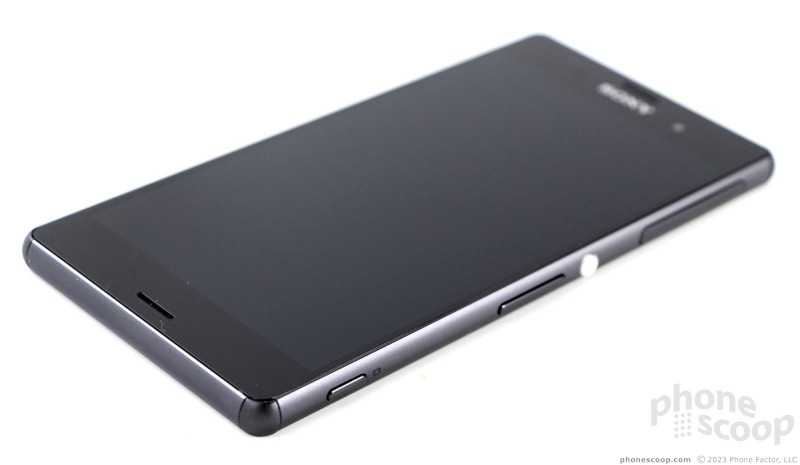

















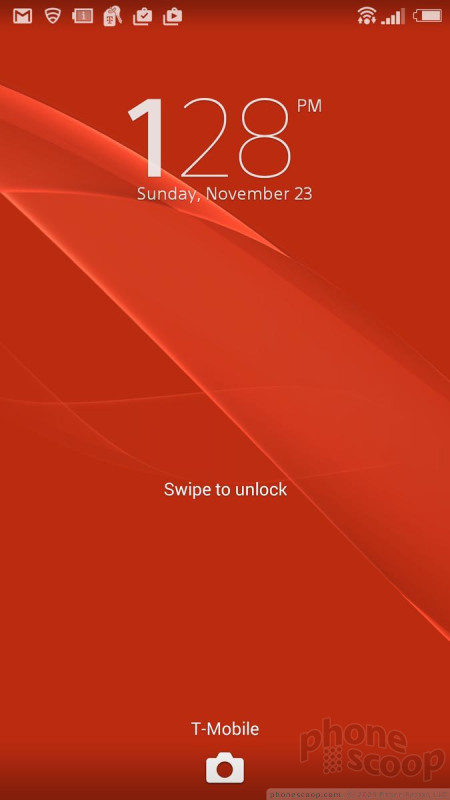










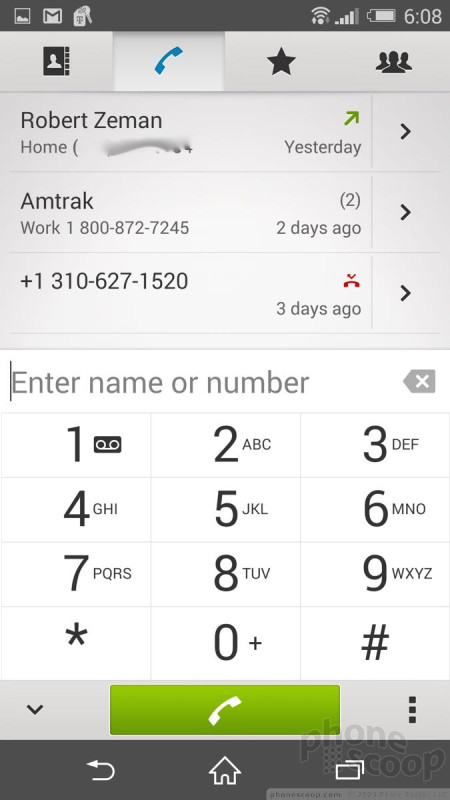





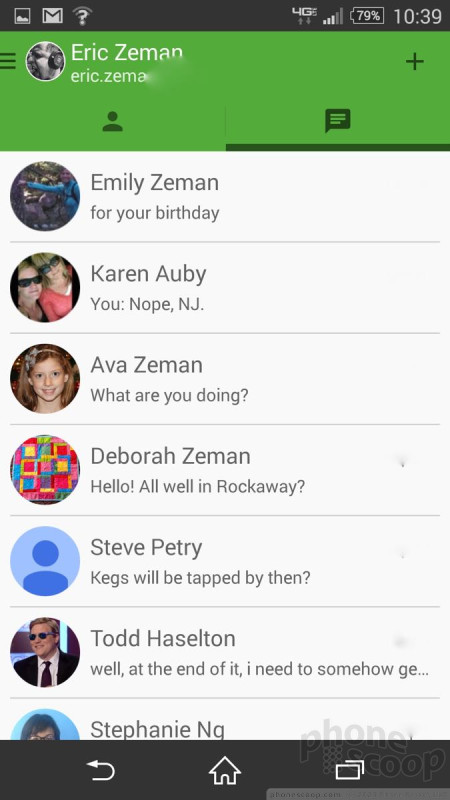











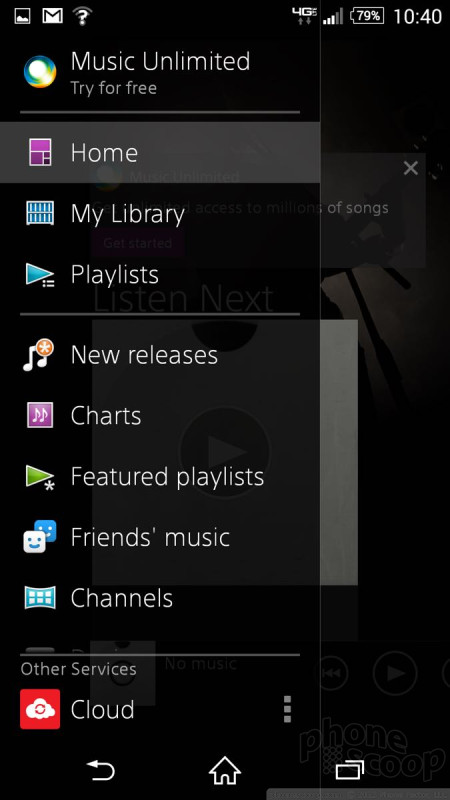




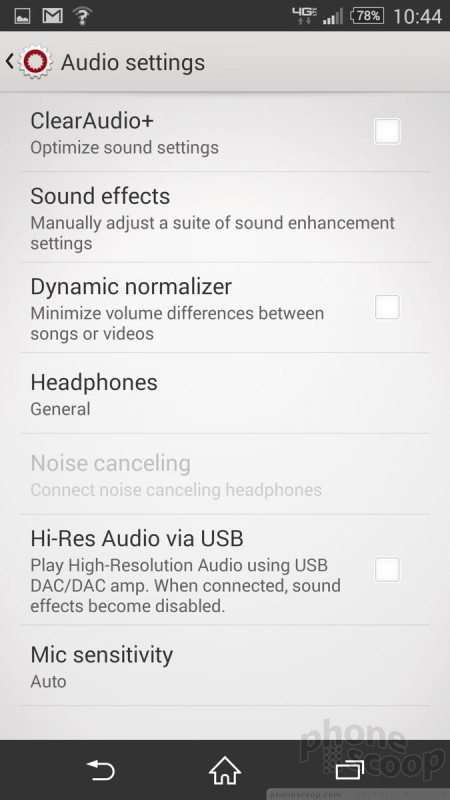



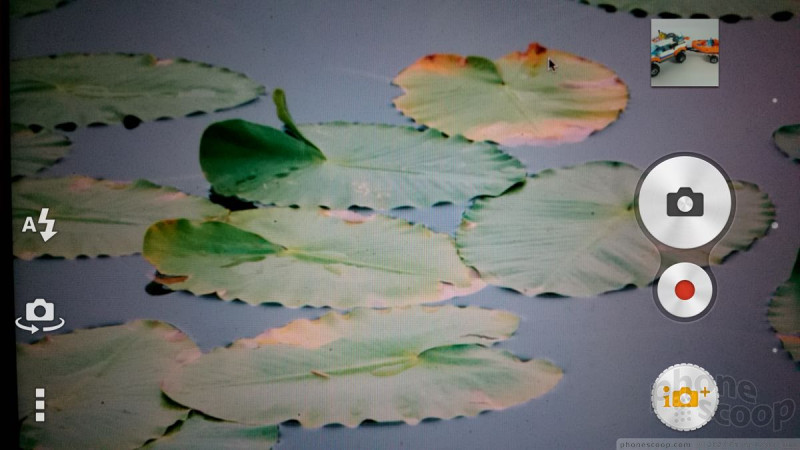
















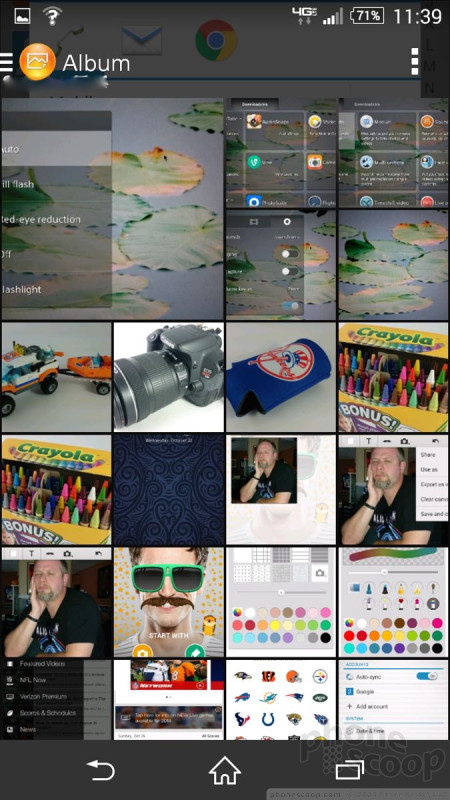






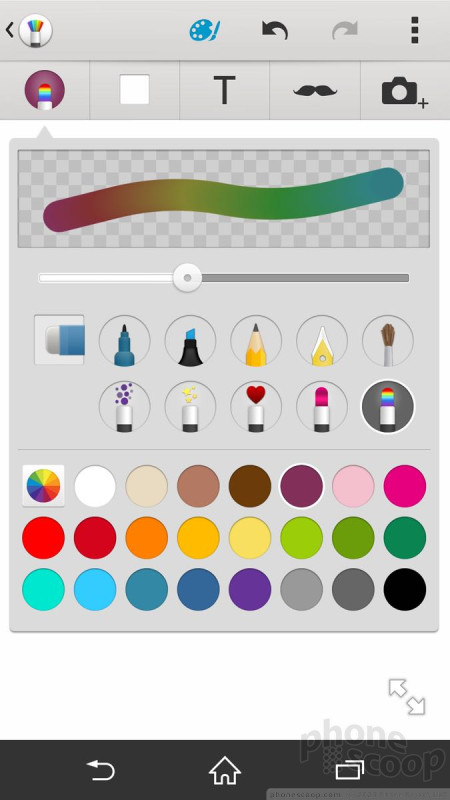




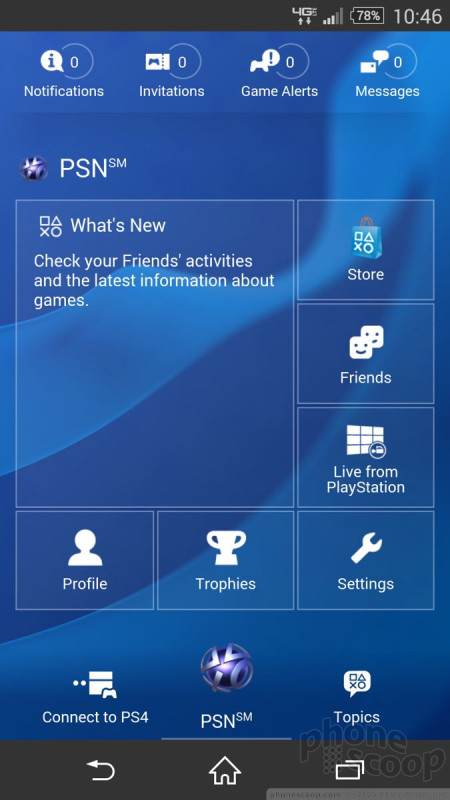






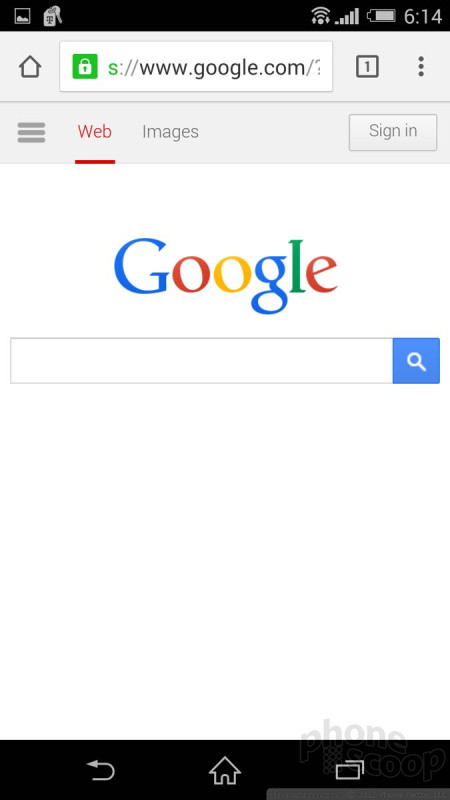




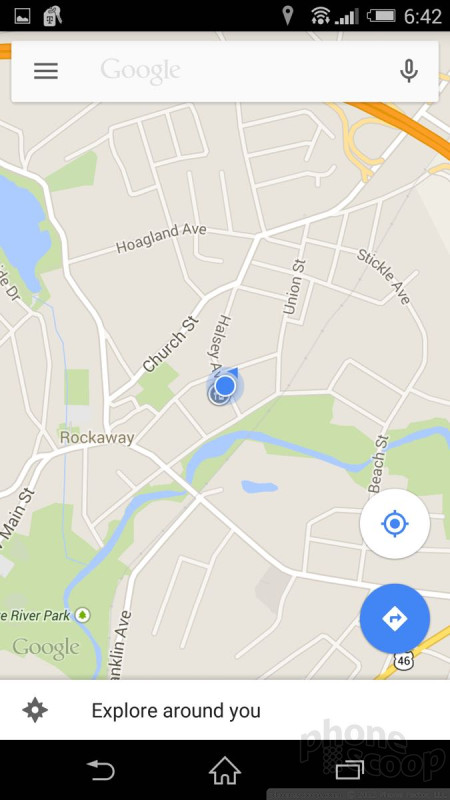




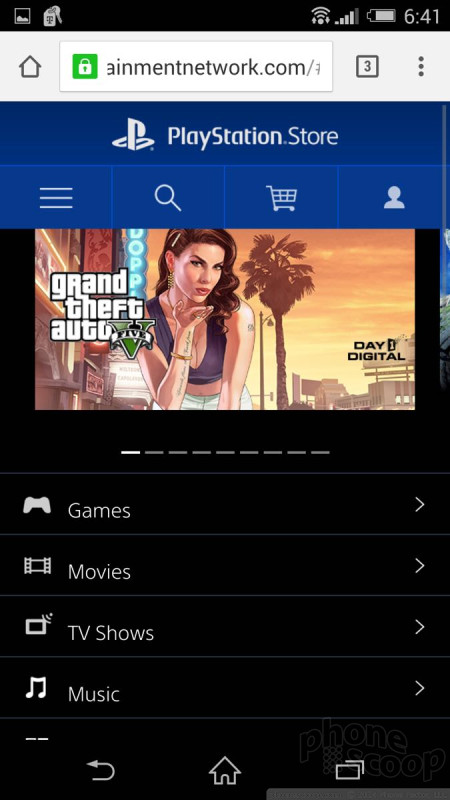




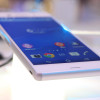 Hands-On: Sony Xperia Z3, Z3 Compact, and E3
Hands-On: Sony Xperia Z3, Z3 Compact, and E3
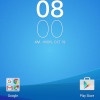 Sony Pushing Marshmallow Concept to Testers
Sony Pushing Marshmallow Concept to Testers
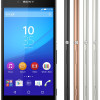 Sony Xperia Z3+ Is a Z4 for the Rest of the World
Sony Xperia Z3+ Is a Z4 for the Rest of the World
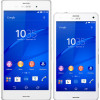 Sony Shows Off Xperia Z3, Z3 Compact, Z3 Tablet
Sony Shows Off Xperia Z3, Z3 Compact, Z3 Tablet
 Sony Xperia Z3
Sony Xperia Z3




